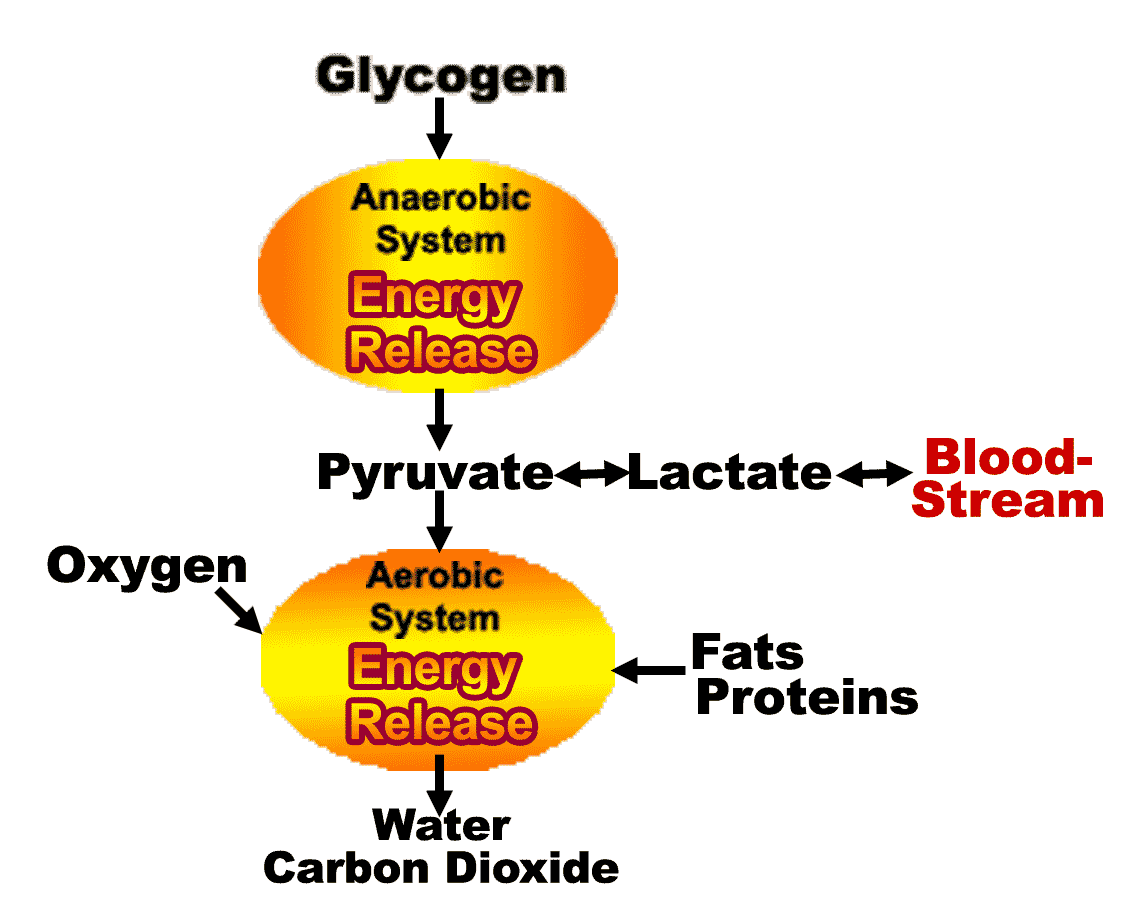Endurance Events and Lactate Testing
With Emphasis on the Triathlon
3 of 19
Why is lactate unique?
Lactate is different from all other measures
Many coaches have said that lactate is interesting, but surely there are other factors that will tell the coach as much or more. Actually, there are not. Lactate is different. Lactate is the unique metabolic variable that reveals the capability of the muscles for an athletic performance. We emphasize "unique" in the preceding sentence because no other metabolic parameter provides the same information. We have already shown that the athlete’s pace when lactate starts to accumulate correlates with performance in endurance events
That alone is more than just useful. It points to how successful one’s training has been. In addition, lactate has an extremely important role in energy metabolism. Lactate is an output of the anaerobic process and a fuel for the aerobic process. Blood lactate levels taken during a well-designed exercise protocol indicate the strength of each system. No other single parameter provides this information. And the strength of both systems determine how fast and how long one can contract the muscles during a race.

the basic aerobic and anaerobic energy systems used in the triathlon
The above diagram shows that pyruvate is the output of the anaerobic system and the input of the aerobic system. Pyruvate immediately turns into lactate in the muscles and just before it is used in aerobic energy, lactate turns back into pyruvate. So it is lactate in the muscle cells and bloodstream, not pyruvate. See the Basic Energy Section for more details. Some of this is pretty technical and is mainly provided to demonstrate why lactate is important.
The ability of the muscles to contract quickly for a peak performance during an athletic event requires that the energy systems providing energy be fine-tuned. They need to be balanced properly so the athlete can generate the highest amount of energy per unit of time during a race of a specific length. We have just pointed out in the previous segment that this balance is what determines which runner will win a particular race. Proper training is what accomplishes this fine-tuning or optimal balance. Lactate testing lets the coach know if the balance has been obtained, or how each energy system must be trained further in order to optimize the balance.
The anaerobic system is difficult to measure correctly. In the diagram above it means trying to assess how much lactate is being produced by glycolysis. However, just because the anaerobic contribution is hard to measure does not make it any less important. And it is very important. The main reason why nearly all sports scientists ignore the anaerobic system is that they say that it does not provide much of the energy for long events. But this attitude misses one of the key aspects of the anaerobic system, that the strength of the anaerobic system has a major impact on how much aerobic energy can be utilized, and that is critical to how well the athlete performs. It is not the amount of the anaerobic energy produced that is important but the controlling nature of the anaerobic system on total energy production that is important. Specifically, if the anaerobic system is inappropriately strong, it gets in the way, and will depress performance in long competitions.
Coaching is a profession requiring both art and science. The building blocks for an optimal performance are many and must be constructed in a proper sequence. They must recognize that each individual is different. Some of these building blocks are correct technique, positive mental attitude and a proper diet. However, the cornerstone for this building is precise physiological training. That is the main reason an athlete spends so much time in the water, on the bike, on the track or the road, in the weight room or wherever training is best conducted. Ask yourself: do you know if all those miles/hours of training are paying out?
But what is appropriate physiological training? It is not volume alone, or those who put in the most hours/miles would always win. It is not intensity alone, or those who pushed themselves the hardest would always win. It is not this year’s fashionable workout, or everyone would use the magic workout, and no one would be better than any one else! It turns out that each individual has a distinct way of adapting, and any smart training plan must recognize individual differences. This is a fact of life. Each has to find his or her own best way to the proper balance of the energy systems and peak conditioning on the day that counts, race day.
With proper protocols a portable lactate analyzer enables the coach to measure both the aerobic and anaerobic conditioning of each athlete. Information about both is necessary for the coach to optimize the training of each athlete, whether he is a 50-meter freestyle swimmer (about 22 seconds plus per race) or an Ironman triathlete (over 8 hours per race for the world's best). With information on each energy system the coach can plan, control and monitor the training of athletes with a precision not available before. Lactate testing provides the important information that enables the coach to individualize the intensity of each athlete's workout and control their training so they reach performance objectives. No over-training and no surprises come race day.

If you do not keep your eye on both,
then you will get a
sub optimal performance.
One Last Thing – What about Thresholds?
There are a lot of different definitions of thresholds, all with slightly different relationships to aerobic and anaerobic energy supply. The only metabolic threshold that can be considered a reliable reference for the long-term performance capacity of an athlete is the maximal lactate steady state (MLSS). However, even this is of limited use by itself. Two athletes may have the same MLSS, but it could be due to very different metabolic contributions. So two athletes with the same MLSS may have to train very differently. Also an athlete really should not train at the MLSS very often. It is one of the most stressful training exercises there is and a formula for over-training if used more than just occasionally.
Despite this caution on the use of thresholds in training and the interpretation of lactate results, we are preparing a very comprehensive discussion of thresholds which takes into consideration a wide range of factors affecting lactate levels. It should be ready sometime in 2011.
Continue on to module 4 which discusses basic energy metabolism
